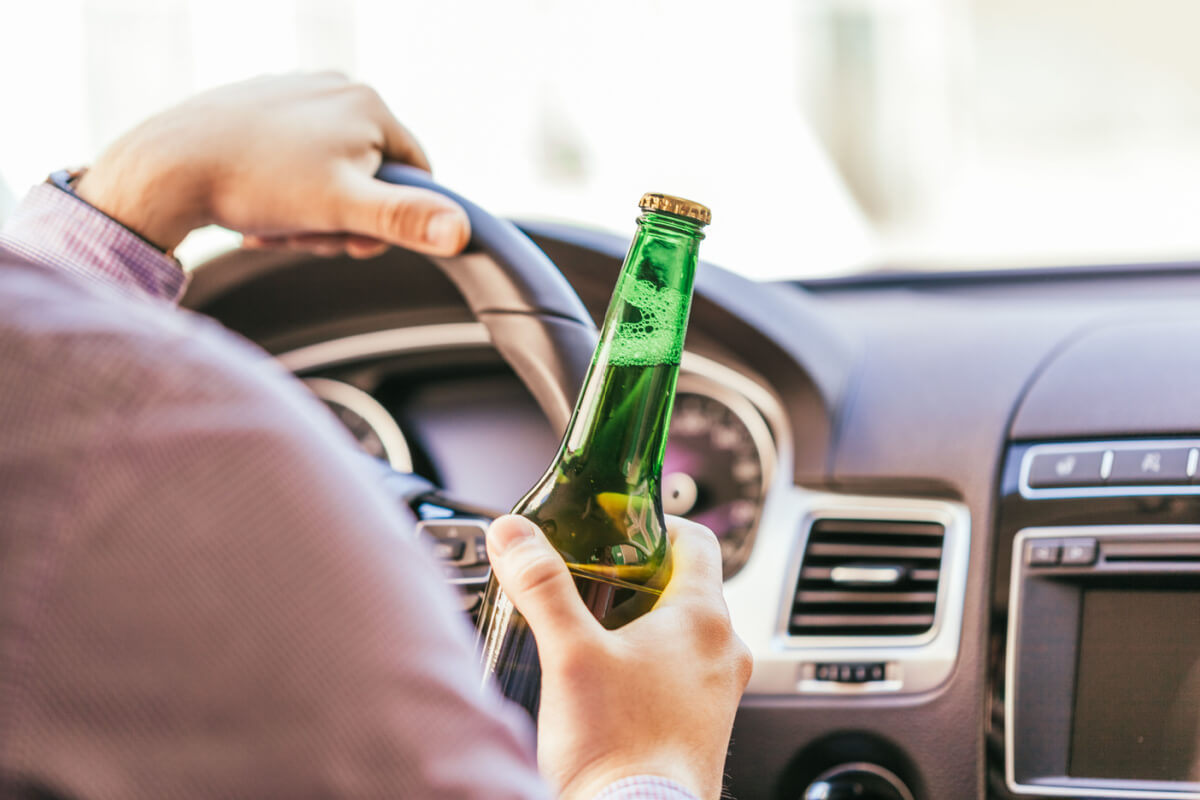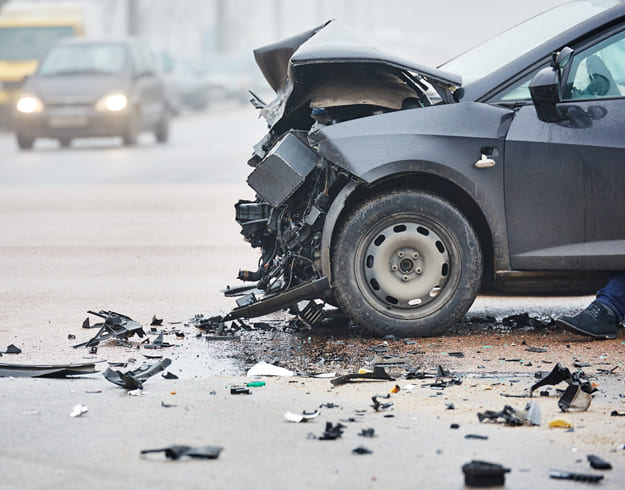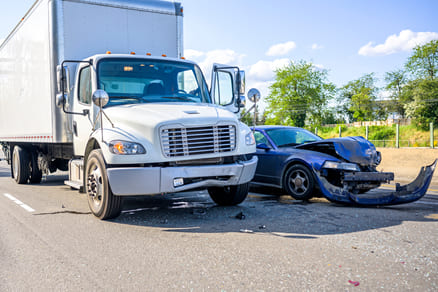GET A FREE CONSULTATION (702) 680-1111

Founding Member & Managing Partner at Gina Corena & Associates
Practice Areas: Personal Injury

Las Vegas, known for its 24-hour lifestyle, presents hidden dangers with its constant activity. The city’s nonstop entertainment and night-shift work culture contribute to driver fatigue, elevating the risk of drowsy driving accidents. The blend of work and leisure disrupts natural sleep patterns, leading to sleep deprivation among residents and workers, including those in the casino and transportation sectors.
The impact on road safety is significant, with fatigue impairing reaction times and decision-making abilities. To mitigate these risks, initiatives such as public awareness campaigns, educational programs on the importance of sleep, and enforced rest periods for night-shift workers are vital. Recognizing the signs of fatigue and prioritizing rest are crucial steps in preventing accidents and ensuring the safety of all who travel the city’s streets.
Drowsy driving, exacerbated by Las Vegas’ 24/7 lifestyle, leads to significant accidents and economic costs. The main risk factors for these crashes include driving late at night or early in the morning, being the sole driver, and traveling on highways or rural roads. These conditions, especially prevalent in a city like Las Vegas, align with the body’s natural sleep cycle and increase the likelihood of fatigue-related accidents.
Sleep deprivation affects drivers by slowing reaction times, reducing vigilance, impairing decision-making, and causing microsleep. Recognizing symptoms of fatigue, such as yawning, lane drifting, and missing exits, is essential for preventing accidents.
To mitigate the risks of drowsy driving, it’s vital to prioritize sleep, take breaks on long trips, avoid alcohol and sleep-inducing medications before driving, and share driving responsibilities. These measures can significantly reduce the incidence of drowsy driving accidents, improving road safety in Las Vegas.
| Aspect | Statistics |
| Annual sleep-related crashes | 328,000 (AAA Foundation for Traffic Safety) |
| Fatigue-related crash costs | $109 billion per year (NHTSA) |
| Drowsy driving fatalities (2021) | 684 (8.2% increase from previous year) |
What are the dangerous effects of sleep deprivation on drivers?
Sleep deprivation has several dangerous effects on drivers, including reduced reaction time, diminished vigilance, impaired decision-making, and the occurrence of microsleep.
These factors significantly increase the risk of accidents, as drowsy drivers are more likely to drift from their lanes, fail to detect slowed or stopped vehicles and struggle to respond to unexpected hazards on the road.
Drowsy driving poses a significant risk on the roads, often underestimated compared to drunk driving. The National Highway Traffic Safety Administration (NHTSA) reported 684 deaths due to drowsy driving in 2021, marking an 8.2% increase from the previous year. Financially, the NHTSA estimates that fatigue-related crashes cost society $109 billion annually, not including property damage.
The AAA Foundation for Traffic Safety (AAA-FTS) estimates that 328,000 sleep-related crashes happen each year, far exceeding police-reported incidents. These statistics highlight the severe consequences of driving while fatigued, including significant injuries and fatalities. The data underlines the urgent need to address and mitigate the risks associated with drowsy driving.
Sleepiness can lead to traffic collisions at any hour, yet certain conditions are particularly conducive to such incidents. Understanding these factors is crucial for addressing and preventing sleepy driving accidents.
Drunk driving accidents predominantly take place in the late afternoon or between midnight and six in the morning. This pattern also holds for accidents caused by sleepiness, as these times coincide with natural decreases in alertness due to the body’s circadian rhythms. The circadian rhythm, an internal biological clock, regulates sleep patterns and causes periods of decreased alertness or dips at specific times, often during late-night and early-morning hours.

These dips in alertness can lead to accidents characterized by specific patterns. Such crashes typically involve a single driver, without any passengers, who veers off the road at high speeds without attempting to stop. This suggests a sudden loss of control, likely due to falling asleep or severe attention lapses caused by fatigue. Moreover, these incidents occur predominantly on highways and rural roads, where drivers may be more susceptible to monotony and less likely to have stimulating interactions or changes in the driving environment that could help maintain alertness.
The isolated nature of these roads and the lack of external stimuli contribute to the risk of drowsy driving incidents. The high speeds often maintained on highways and rural roads exacerbate the potential for severe outcomes when a driver falls asleep or becomes inattentive. Therefore, these areas are frequent scenes of high-speed crashes involving fatigued drivers, underscoring the need for targeted preventive measures in such locations.
Fatigue significantly impacts public safety, health, and quality of life in America, leading to poor performance, vehicular accidents, workplace mishaps, and health issues. The causes of exhaustion vary, from childcare and work demands to social activities and lengthy travels. These factors contribute to reduced alertness, impaired decision-making, and an increased risk of accidents and long-term health problems.
The challenge of preventing drowsy driving is exacerbated by a culture prioritizing continuous activity and productivity, often at the expense of sleep. Addressing this issue requires a cultural shift to prioritize rest and understand the dangers of drowsy driving.
While “drowsy,” “sleepy,“ and “fatigued“ are often used interchangeably, they represent different aspects of tiredness. These affect an individual’s ability to function and increase the risk of drowsy driving. Effective communication and education on these distinctions and their impact on driving safety are essential for mitigating the problem.
Sleep deprivation has dangerous effects on drivers, significantly impairing their abilities and increasing the likelihood of accidents on the road.
Reduced Reaction Time:
Sleep deprivation drastically affects a driver’s reaction time. When tired, drivers may not respond quickly enough to changing traffic conditions, such as sudden lane changes, unexpected obstacles, or abrupt turns. The delay in reacting can lead to collisions that could have been avoided with quicker response times. As reaction time slows, the ability to assess and respond to risks promptly diminishes, making even routine driving situations potentially hazardous.
Diminished Vigilance:
Lack of sleep affects a driver’s vigilance, akin to the effects of alcohol impairment. This reduced alertness leads to a decreased focus on the road and the surrounding traffic conditions. Drivers may miss important cues or signs indicating potential danger, such as changing traffic lights, pedestrians crossing, or suddenly braking. As a result, the probability of being involved in an accident escalates due to the diminished capacity to monitor and react to the driving environment.
Impaired Decision-Making:
Fatigue negatively impacts the cognitive function of drivers, making it more challenging to make quick, sound decisions. Sleep-deprived drivers may struggle to choose the best course of action in situations requiring rapid assessment and judgment, such as navigating through heavy traffic or responding to sudden weather changes. Their ability to judge speed, distance, and the movement of other vehicles is compromised, increasing the risk of misjudgments and consequent accidents.
Microsleeps:
Drivers suffering from severe sleep deprivation may experience microsleeps – brief, involuntary episodes of sleep lasting from a fraction of a second to several seconds. During these episodes, a driver is essentially unconscious and unable to respond to environmental stimuli. Microsleeps are particularly dangerous because they can occur without the driver’s awareness, leading to a total loss of control of the vehicle. The occurrence of microsleeps while driving can result in devastating accidents, as the driver is incapacitated, however briefly, at critical moments.
Drowsy driving significantly increases the risk of road accidents due to various impairments in the driver’s abilities.
Slipping Away from Lanes: Tired drivers often exhibit reduced motor skills and diminished concentration, making it challenging to maintain their lane position. This lapse in control can lead to drifting across road lines, resulting in head-on or side-swipe collisions with other vehicles. The likelihood of such incidents increases with the level of fatigue as the driver’s ability to focus on the driving task and stay within lane boundaries decreases. These types of accidents can be hazardous, leading to severe injuries or fatalities, especially at high speeds on highways.
Rear-end Crashes: Drowsy drivers, due to reduced alertness and slower reaction times, frequently fail to notice when the traffic ahead has slowed down or stopped. This lack of attention often results in rear-end crashes, where the fatigued driver collides with the vehicle in front of them. These accidents are common in congested traffic conditions and can cause significant damage and injury, even at lower speeds. The delayed reaction time of a drowsy driver means they might not brake in time to avoid the crash, or in some cases, they might not brake at all.
Unable to Respond to Dangers: Fatigue impairs a driver’s ability to quickly and effectively respond to sudden or unexpected road situations, such as obstacles, abrupt stops in traffic, or changes in road conditions. Slower cognitive processing and delayed physical responses mean that fatigued drivers are less capable of evading potential hazards, increasing the likelihood of accidents. This inability to react promptly or appropriately to dynamic road conditions can lead to collisions that a well-rested and alert driver could have avoided.
Inattentive driving, mainly due to sleepiness, represents a significant danger on the roads, as evidenced by alarming statistics:
The National Highway Traffic Safety Administration (NHTSA) estimated that in 2017, sleepy driving was a factor in approximately 91,000 police-reported crashes. This figure highlights the extent of the issue, showing that drowsy driving is not an isolated problem but a widespread hazard affecting thousands of road users annually.

The impact of these crashes is profound, with about 50,000 individuals sustaining injuries in incidents attributed to drowsy driving. These injuries range from minor to severe, affecting not only the drivers involved but also passengers, pedestrians, and other road users. The repercussions of these injuries can have long-lasting effects on the victims’ health and quality of life.
Furthermore, nearly 800 fatalities were reported in the same year due to drowsy driving-related accidents. This loss of life underscores the lethal potential of driving while fatigued, placing it as a critical public safety concern. Each statistic represents not just a number but a life, a family, and a community affected by the preventable consequences of inattentive driving.
Identifying driver fatigue is crucial for preventing drowsy driving accidents. Key symptoms include:
Prompt recognition and response to these symptoms, like taking a break or switching drivers, are vital for safe driving.
To prevent accidents caused by drowsiness, a collective approach is essential. Here are strategies to keep tired drivers safe:
Set priorities. Sleep is crucial:
Ensuring adequate rest before embarking on a journey is vital, especially for long distances. Drivers should prioritize a night’s sleep to restore their alertness and readiness for driving demands.
Take Rest Periods:
During extended trips, it’s important to take regular breaks. These pauses allow drivers to refuel their vehicle and their bodies, stretch to alleviate physical stiffness, and relax to refresh their minds. Rest periods help maintain concentration and prevent fatigue over long distances.
Steer clear of alcohol and medications:
Certain medications and alcohol have sedative effects that can significantly impair a driver’s ability to remain alert. Avoiding these substances before and during driving is crucial, as they can exacerbate tiredness and reduce reaction times.
Distribute Driving Accountabilities:
When traveling with others, sharing driving responsibilities can help prevent fatigue. Rotating drivers allows each person to rest and recuperate, ensuring that the person behind the wheel is always alert and well-rested.
Make an Overnight Travel Plan:
Planning ahead to include overnight stays at hotels or designated rest areas can be lifesaving for journeys that span overnight hours. This approach allows drivers to get adequate sleep and resume their journey refreshed, reducing the risk of drowsy driving.
These measures highlight the importance of planning and responsibility in preventing tired drivers from becoming dangerous on the roads. By prioritizing sleep, taking breaks, avoiding sedatives, sharing driving duties, and planning for overnight rests, drivers can significantly reduce the risks associated with drowsy driving.
Driving alert requires several important practices, with adequate sleep being the cornerstone of safe driving. Here are some essential tips to ensure alertness behind the wheel:
Prioritize Sleep:
Experts recommend seven to eight hours of sleep per night to fend off the impairments associated with sleep deprivation. Consistent, quality sleep helps maintain the cognitive functions necessary for safe driving, such as reaction time, decision-making, and attention.
Plan Ahead for Long Trips:
Before embarking on a long journey, especially with family, ensure a good night’s sleep the previous night. Driving fatigued not only risks your safety and that of your passengers but also endangers other road users.
Address Teen Sleep Needs:
Teenagers often face a biological shift that increases their need for sleep, yet many do not get the required rest. This lack of sleep can be hazardous when they drive, increasing the risk of drowsy driving on longer trips. It’s crucial to educate teenagers on the importance of sufficient sleep before driving.
Avoid Alcohol Before Driving:
Alcohol exacerbates tiredness and impairs driving ability even more when combined with fatigue. It’s important to avoid alcohol before driving to prevent the added risk of drowsiness and impairment.
Check Medication Labels:
Both prescription and over-the-counter medications can cause drowsiness. Always read the labels to identify any potential sedative effects. If you need to take such medications, consider alternatives to driving, like public transportation, or plan your travel when the medication’s sedative effects are minimal.
Avoid Peak Drowsiness Times:
Try to steer clear of driving during late afternoon and early morning hours (midnight to six a.m.), when the risk of drowsiness is highest. If you must drive during these times, especially alone, be extra vigilant for signs of fatigue, such as drifting across lanes or hitting rumble strips.
Las Vegas‘ nonstop lifestyle significantly increases the risk of driver fatigue and drowsy driving accidents. It is crucial for safety to recognize the dangers and stay vigilant against the signs of tiredness.
Understanding the Risks:
In a city active at all hours, the likelihood of sleep deprivation and its consequent risks on the road escalates. Awareness of these hazards is the first step in prevention.
Identifying Warning Signs:
Noticing early signs of fatigue, like persistent yawning and difficulty maintaining lane discipline, is key to taking timely action, such as resting or switching drivers.
Taking Proactive Measures:
Ensuring sufficient rest and planning travel to avoid peak fatigue times are vital strategies for preventing drowsy driving. Both individuals and organizations can contribute to a safety culture by emphasizing the importance of sleep.
Community Effort for Safety:
A community-wide approach is necessary to effectively address the issue of drowsy driving in Las Vegas. This includes promoting safe driving initiatives and providing resources to combat fatigue.
Staying alert and prioritizing safety allows everyone to enjoy the vibrant life of Las Vegas without compromising on road safety. By being proactive and responsible, we can help ensure safer travel for all in the city that never sleeps.
If you or a loved one has been involved in a drowsy driving accident in Las Vegas, it is crucial to seek the guidance of an experienced personal injury attorney.
At Gina Corena & Associates, our dedicated team is committed to fighting for the rights of accident victims and helping them secure the compensation they deserve.
Contact us today to schedule a consultation and learn how we can help you navigate the legal process and protect your interests.

As founder of Gina Corena & Associates, she is dedicated to fighting for the rights of the people who suffer life-changing personal injuries in car, truck and motorcycle accidents as well as other types of personal injury. Gina feels fortunate to serve the Nevada community and hold wrongdoers accountable for their harm to her clients.